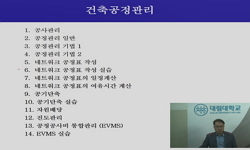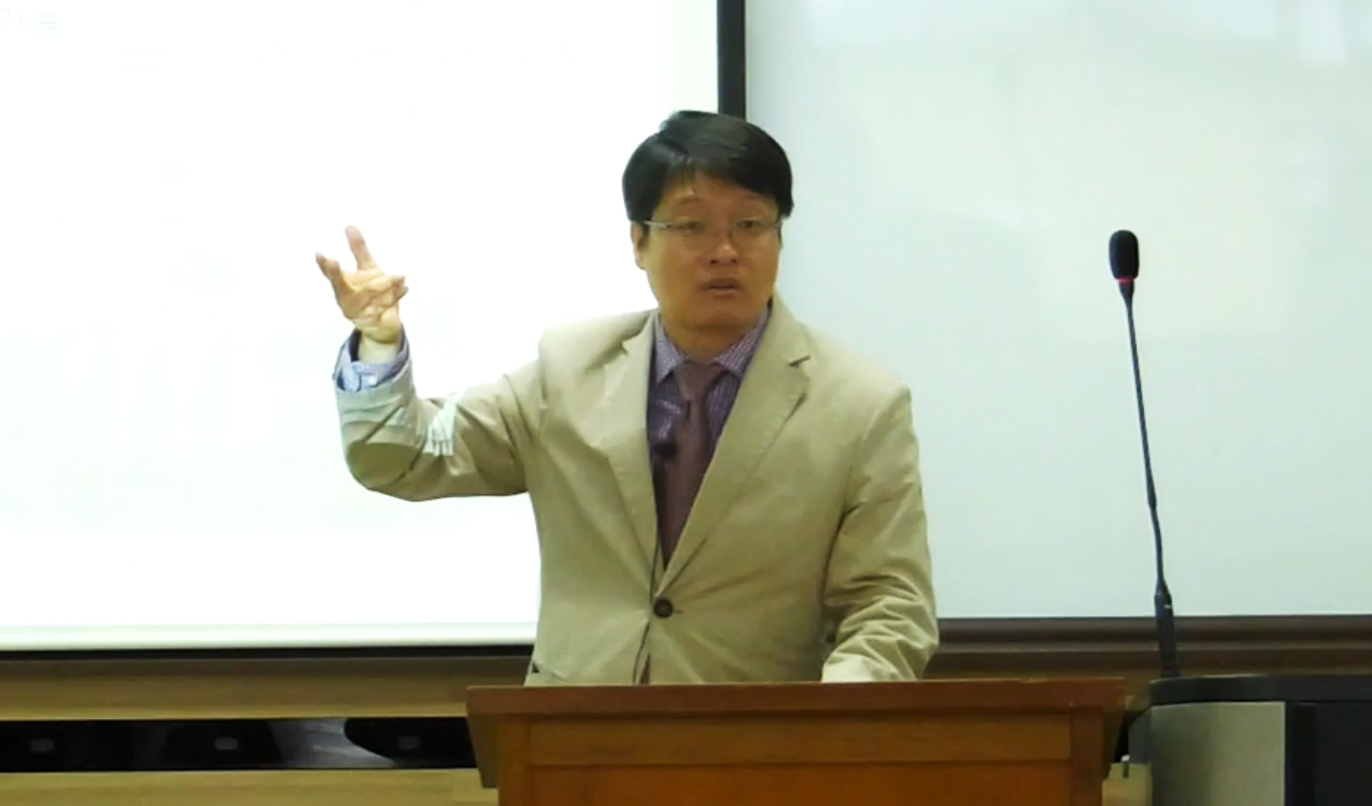光海君代에는 전쟁으로 폐허가 된 昌德宮과 昌慶宮의 再建이 있었으며, 仁慶宮과 慶德宮이라는 宮闕을 신축하는 등, 대규모로 宮闕을 건축하는 활발한 공역이 있었다. 그리고, 조선 후기의 ...
http://chineseinput.net/에서 pinyin(병음)방식으로 중국어를 변환할 수 있습니다.
변환된 중국어를 복사하여 사용하시면 됩니다.
- 中文 을 입력하시려면 zhongwen을 입력하시고 space를누르시면됩니다.
- 北京 을 입력하시려면 beijing을 입력하시고 space를 누르시면 됩니다.
https://www.riss.kr/link?id=T7963049
- 저자
-
발행사항
서울: 弘益大學校, 2000
-
학위논문사항
學位論文(博士)-- 弘益大學校 大學院: 建築學科 建築計劃專攻 2000年 12月 30日
-
발행연도
2000
-
작성언어
한국어
- 주제어
-
KDC
611 판사항(4)
-
발행국(도시)
서울
-
기타서명
(A)study on the architecture of Korean palaces in the reign of Gwanghaegun
仁慶宮과 慶德宮을 중심으로 -
형태사항
xi, 175p.: 삽도; 26cm
-
일반주기명
국.영문초록 및 부록 수록
참고문헌 : p.151-153 - 소장기관
-
0
상세조회 -
0
다운로드
부가정보
국문 초록 (Abstract)
光海君代에는 전쟁으로 폐허가 된 昌德宮과 昌慶宮의 再建이 있었으며, 仁慶宮과 慶德宮이라는 宮闕을 신축하는 등, 대규모로 宮闕을 건축하는 활발한 공역이 있었다. 그리고, 조선 후기의 宮闕 건축은 광해군 대의 것을 크게 벗어나지 못했다.
그러나, 光海君代의 宮闕이 현존 유구로 남아 있지 않고, 이에 대한 자료도 절대적으로 부족하여 光海君代의 건축에 관한 연구는 거의 이루어지지 않았다.
따라서, 본 연구에서는 기존에 알려지지 않은 仁慶宮과 慶德宮을 통하여 光海君代 宮闕의 건축 형식을 알아보는 것을 목적으로 한다.
본 연구는 光海君代의 仁慶宮과 慶德宮 건축을 범위로 하여, 주로 고문현과 도면, 옛 지도 등의 사료를 분석하여 光海君代의 건축 형식을 파악하도록 한다. 또한, 이를 통하여 추정 도면을 작성하도록 한다.
연구의 구성 내용은 다음과 같다.
제1장에서는 연구의 배경, 목적, 의의 등을 논한다.
제2장에서는 宮闕 건축이 이루어졌던 당시의 시대적인 배경과, 光海君代에 있었던 영건 활동, 그리고 영건 조직에 대하여 분석한다.
제3장에서는 光海君代에 창건된 仁慶宮과 慶德宮의 위치와 전각 구성을 연구한다.
제4장에서는 仁慶宮과 慶德宮의 正殿과 便殿 건축을 연구한다.
제5장에서는 仁慶宮과 慶德宮의 寢殿 건축을 연구한다.
제6장에서는 위의 연구 결과를 통하여 결론을 도출한다.
이러한 구성으로 진행시킨 연구의 결론은 다음과 같다.
먼저, 史料를 통하여 仁慶宮과 慶德宮의 배치 형태를 분석한 사실은 다음과 같다.
1) 광해군은 임진왜란으로 소실된 宮閨들을 再建하였을 뿐만 아니라, 仁慶宮과 慶德宮을 창건하였는데, 仁慶宮과 慶德宮은 景福宮 再建을 염두에 두고 하나의 궁역으로 사용할 수 있도록 계획하였다.
2) 仁慶宮은 東向 배치를 하였는데, 慶德宮의 경우처럼 正殿과 便殿 같은 주요 전각은 南向을 하고 다른 전각들은 東向을 했을 것으로 생각된다.
그리고, 慶德宮의 배치 형태는 景福宮과 昌德宮의 배치 형태가 혼합된 형태 이다.
또한, 본 연구에서는 사료와 古地圖, 宮關圖, 궁중행사도 등의 분석을 통하여 仁慶宮과 慶德宮의 건축 형식을 알아보고 추정도면을 작성하였는데, 그 결과는 다음과 같다.
(1) 仁慶宮 위치도
仁慶宮의 궁역은, 현재 지도에서 仁慶宮의 궁역은 秋史路가 동쪽 한계가 되고, 通仁洞이 북쪽 한계선이 된다. 그리고, 남쪽 한계선은 社積路 위에 난 길이 되고, 서쪽 한계선은 한성 성곽이 경계선이 된다.
(2) 正殿과 便殿 추정 평면도
① 仁慶宮의 正殿인 弘政殿의 正面 어칸은 20尺고 나머지 칸은 14尺을 사용하였을 것으로 생각된다. 여기서 1尺의 길이는 31cm로 잡았다.
② 仁慶宮의 便殿인 光政殿은 正面에서 어칸과 양 쪽 협칸은 14尺로이고, 측면에서 어간은 14尺이고 양 쪽 협칸은 9尺 씩으로 하였다.
③ 仁慶宮의 和政보과 慶德宮의 興政堂은 內殿의 영역에 속해 있으면서 便殿 기능을 수행하는 전각으로, 內殿의 성격을 띤다. 이들은 石柱 위에 전각을 구성하는 형태를 하고, 앞줄에 마루를 두었다. 그리고, 寢殿처럼 대청을 사이에 두고 양 쪽에 방을 두었을 것으로 생각된다.
和政堂의 정면은 모두 10尺으로 하였고, 측면 앞 줄의 마루도 10척을 하였다. 그리고, 뒤에 두 칸은 7尺 5寸씩 하였는데, 측면의 주요 칸은 東西 방향으로 공간이 통해 있어야 하므로 중간에 기둥이 가로막히면 안되므로 합하여 15尺으로 계획하였다.
(3) 寢殿 추정 평면도
① 仁慶宮 靑瓦殿은 두 개의 寢殿 가운데 서쪽에 있는 寢殿으로 왕의 寢殿이다.
靑瓦殿은 왕의 寢殿이므로 昌慶宮 환경전처럼 石柱 위에 樓閣의 형식으로 조성된 형태로 보았다.
靑瓦殿은 정면에서 어칸3칸은 13尺씩이고, 10尺씩 두 칸으로 이루어진 협칸이 양쪽에 있다. 그리고 양 끝의 퇴칸은 7尺씩이다. 또한, 측면에서 어칸 두칸은 11尺로씩이고 전후 퇴칸은 7尺씩이다.
② 仁慶宮 慶壽殿은 두 개의 寢殿 가운데 동쪽에 있는 寢殿으로 왕비가 內殿의 행사를 하는 正寢殿이다. 따라서 넓은 월대가 있다.
慶壽殿은 정면에서 어칸 3칸은 13尺씩이고, 10尺씩 두 칸으로 이루어진 협칸이 양쪽에 있다. 그리고 양 끝의 퇴칸은 7尺씩이다. 또한, 측면에서 어칸 세 칸은 11尺씩이고 전후 퇴한은 7尺씩이다.
③ 慶德宮 會祥殿은 慶德宮에 있는 두 개의 寢殿 중에서 서쪽에 있는 寢殿으로, 왕의 寢殿이다.
會祥殿은 「西闕圖案」 과 「西關營建都監儀執」 의 그림이 다른데, 光海君代의 會祥殿은 昌慶宮 환경전처럼 石柱 위에 건물이 조성된 형태로 보았다.
④ 慶德宮 隆福殿은 慶德宮에 있는 두 개의 寢殿 중에서 동쪽에 있는 寢殿으로, 왕비가 內殿의 행사를 치르는 正寢殿이다, 넓은 월대를 두었다.
이렇게 건축된 光海君代 宮關의 建築 特性은 다음과 같다.
1) 正殿과 便殿 建築의 特性
① 正殿과 便殿 建築의 恒常性
正殿과 便殿의 규모를 계획하는 데에는 陰陽五的行인 수의 개념을 적용하여, 시대의 특징을 반영하는 것이 아니라 시대가 흘러도 변하지 않는 개념을 도입 하였다. 그 이유는 正殿과 便殿은 王朝를 상징하기 때문에, 건축 계획을 하는데 있어서도 시대가 흐르더라도 원칙에서 변함이 없는 恒常性이 적용되었다.
그러나 內殿의 영역에 속하면서 실제적으로 便殿의 역할을 하는 전각인 경우는 규모를 정하는 데 있어서 획일적인 원칙이 도입되지는 않았다.
② 便殿의 分化
燕山君代 이후 부터는 便殿 외에 便殿 기능을 하는 또 다른 '堂'을 두어서, 便殿의 기능이 分化되었다.
특히, 光海君代에는 便殿의 역할을 수행하는 '堂'이 正寢殿 앞에 위치하여, 正殿과 便殿을 外殿으로 하고, 內殿과 영역을 명확히 분리하였다는 것이 특징 적이다.
2) 寢殿 建築의 特性
① 世宗朝 이후에는 왕과 왕비의 寢殿의 기능이 分化되어 갔으며, 光海君代에는 이러한 요구에 맞게 두 개의 寢殿을 설치하여 왕비의 寢殿인 正寢殿과는 별도로 왕의 寢殿을 두었다. ② 궁중에서 있는 큰 행사를 치르기 위해서는 월대가 필요하므로, 正寢殿에는 월대가 갖추어져 있다.
③ 왕의 寢殿은 外殿의 영역에 �樗�위치하였다. 그리고, 光海君代에 건축된 왕의 寢殿은 石柱 위에 전각이 구성되어 樓閣의 형식을 하였을 것으로 추정된다.
仁慶宮과 慶德官은 광해군의 왕권 강화를 위해 건축된 宮闕로, 당시의 기술력을 집약시켜 장기간 동안 이루어 낸 대규모 건축 사업이었다. 그리고, 조선 초기에 宮闕들이 건축된 이후에 변화한 상황이 반영되어 조성되었으므로, 조선 후기의 官闕 건축의 특징을 나타내는 의미있는 宮闕이다. 따라서, 仁慶官과 慶德官은 비록 그 동안 주목 받아오지는 못했던 宮闕이지만, 현존 유구가 없을 뿐이지 건축적으로 다른 官闕에 비해서 결코 뒤떨어지지 않는다는 것을 알 수 있었다.
다국어 초록 (Multilingual Abstract)
During the years of KwangHaeGun(光海君), an active public services of building large scale palaces such as reconstruction of ChangDukGung and ChangKyungGung and new construction of InKyungGung(仁慶宮) and KyungDukGung(慶德宮) were carried out...
During the years of KwangHaeGun(光海君), an active public services of building large scale palaces such as reconstruction of ChangDukGung and ChangKyungGung and new construction of InKyungGung(仁慶宮) and KyungDukGung(慶德宮) were carried out. And palaces of late Chosun dynasty did'n go much different from those of KwangHaeGun years.
But as there are no remains and insufficient datas of palaces of KwangHaeGun period, studies on this period have scarcely achieved.
Therefore, this study is to examine architectural form of palaces of KwangHaeGun period through InKyungGung and KyungDukGung.
Based on historical records, drawings and ancient maps, this study focus on architectures of InKyungGung and KyungDukGung, therefore understanding architectural forms of KwangHaeGun period is the purpose. Also, through this study, assumed drawings are made.
The results are as followings:
First, an analysis of site planning of InKyungGung and KyungDukGung based on historical records are as followings:
1) Not only KwangHaeGun reconstructed destroyed palaces due to ImJinWaeRan(Japanese invasion of Korea in 1592), InKyungGung and KyungDukGung have newly constructed. InKyungGung and KyungDukGung was planned considering reconstruction of KyungBokGung.
2) InKyungGung faces east, and it is thought that major JunKak(殿閣) such as JungJun(正殿) and PyunJun(便殿) must have faced south, rests east.
3) And site planning of KyungDukGung is a mixed form of site planning of KyungBokGung and ChangDukGung.
Also, by analyzing historical records, ancient maps, palace drawings, palace event drawings, architectural forms of InKyungGung and KyungDukGung are examined then assumed drawings are made. The results are as followings:
(1)Location of InKyungGung
Boundary of InKyungGung is as followings; From map of present days, east boundary ends up at ChuSaRo(秋史路), north boundary goes till TongInDong (通仁洞). And SaJikRo(社稷路) is south end, west end is HanSung fortress.
(2) Assumed plan of JungJun(正殿) and PyunJun(便殿)
① UhKan(Middle span) of front side of HongJungJun(弘政殿), which is JungJun of InKyungGung, is thought to be 20尺 and rests 14尺. Here, 1尺 is to be 31cm.
② KwangJungJun(光政戰), PyunJun of InKyungGung, has 14尺 of UhKan and HyupKan(outer span) of front side and UhKan of side face is 14 尺 and outer spans at each side are thought to be 9尺.
③ HwaJungDang(和政堂) of InKyungGung and HeungJungDang(興政當) of KyungDukGung is located within NaeJun(內殿), the penetralia) and it carries out functions of PyunJun and has characteristics of NaeJun. This is built on stone pillars(石柱) and has maru(a wooden floor) in front. And as ChimJun(寢殿), it is thought to have 2 rooms, DaeChung(臺廳) in between. Front side of HwaJungDang has spans of 10尺 and wooden floor of side face also has spans of 10尺. And two spans of back side was 7尺5寸 and major spans of side face had to be opened to east·west direction, so not to put column in the middle, it was planned to be 15尺.
(3) Assumed plan of ChiJun(寢殿)
① ChungWaJun(靑瓦殿) of InKyungGung is king's sleeping room, located in the west among two. ChungWaJun's three middle spans of front side have spans of 13尺, and has outer spans on each side, each is two of 10尺. And end spans at both end are 7尺. Also for side face, 2 middle spans are 11尺. end spans are both 7尺.
② KyungSooJun(慶壽殿) of InKyungGung is queen's sleeping room, located in the east among two. This acts as NaJun(內殿) and is called as JungChimJun (표寢殿). Therefore they have a wide WoIDae(base). KyungSooJun's three middle spans of front side have spans of 13尺, and at both ends, there are two outer spans, each is two of 10尺. And end spans of both end are 7尺, Also for side face, two middle spans are 11尺, end spans are both 7尺.
③ HwaeSangJun(會祥殿) of KyungDukGung is king's sleeping room, located in the west among two.
Drawing of HwaeSanJun shown in 「SuhKwoIDoAn(西關圖案)」 and 「 SuhKwolYungKunDoRamUiKwae(西關營建都監儀軌) are different but HwaeSanJun of KwangHaeGun period seem to be built on stone pillars just like HwanKyungJun(歡慶殿) of ChangKyungGung.
④ YungBokJun(隆福殿) of KyungDukGung is queen's sleeping room, located in the east among two which acts as NaeJun(內殿) and is called as JugChimJun (正寢殿). It had a wide WolDae(base).
As built above, architectural characteristics of palaces of built in the years of KwangHaeGun are as followings:
1) Characteristics of Jungun(正殿) and PyuJun(便殿)
① Constancy in JungJun and PyunJun
In planning size of JungJun and PyunJun, mathematical principles are applied, this is not to reflect characteristics of each era but to import unchan8ing principles. The reason for this is JunJun and PyunJun symbolize a dynasty that in planning architecture, this constancy, unchanging from basic principles, is applied.
② Differentiation of PyunJun
As functions of PyunlJun become to divide since the years of YunSanGun(燕山君), another Dang(堂) other than PyunJun was put to perform as PyunJun.
Especially what is distinctive is that during the years of KwangHaeCun, Dang (堂) acting as a PyunJun, is located in front of JungChimJun(正寢殿). This made JungJun and PyunJun a WaeJun(外殿) therefore clearly dividing boundary area of NaJun and WaeJun.
2) Characteristics of ChimJun(寢殿, the sleeping room)
① Since SeJong dynasty, functions of king and queen was starting to differentiate, that during the years of KwangHaeGun, two ChimJun(寢殿) was made. Therefore, other than queen's ChimJun, (also called JungChimJun(正寢殿)), king's ChimJun was placed.
② To perform big events at the palace, a WolDae(base) was needed, therefore they put in front of JungChimJun(正寢殿).
③ Kings ChimJun located near the area of WaJun(外殿). And King's ChimJun constructed during the years of KwangHaeGun is assumed to be built on stone pillars(石柱).
InKyungGung and KyungDukGung are constructed strengthen royal authority of KwangHaeGun, and was a lar6e scale architectural business carried out for a long term, And it is made by reflecting changes of palaces of early Chosun dynasty, and it shows characteristics of palaces of late Chosun dynasty, Though InKyungGung and KyungDukGung didn't get much attention, it do not fall behind in many ways compared to other palaces, only that there are no remains.
목차 (Table of Contents)
- 목차
- 國文抄錄
- 第1章. 序論 = 1
- 1.1. 硏究 目的 = 1
- 1.2. 硏究의 範圍와 方法 = 3
- 목차
- 國文抄錄
- 第1章. 序論 = 1
- 1.1. 硏究 目的 = 1
- 1.2. 硏究의 範圍와 方法 = 3
- 第2章. 光海君代의 宮闕 營建 活動 = 8
- 2.1. 時代的 背景 = 8
- 2.1.1. 社會的 背景 = 8
- 2.1.2. 光海君의 政策과 思想 = 10
- 2.2. 宮闕 營建 過程 = 12
- 2.2.1. 昌德宮과 昌慶宮 重建 = 12
- 2.2.2. 仁慶官과 慶德宮 創建 = 18
- 2.3. 營建 組織 = 24
- 2.3.1. 組織 體系 = 24
- 2.3.2. 職任과 思想 = 28
- 2.3.3. 仁慶宮·慶德宮의 營建과 營建 組織의 變化 = 32
- 第3章. 仁慶宮·慶德宮의 位置와 殿閣 構成 = 36
- 3.1. 仁慶宮과 慶德宮의 位置 = 36
- 3.1.1. 朝鮮朝 宮闕의 使用 = 36
- 3.1.2. 仁慶宮·慶德宮의 位置와 景福宮과의 關係 = 41
- 3.2. 殿閣 構成 = 52
- 3.2.1. 朝鮮朝 宮闕의 配置 形態 = 52
- 3.2.2. 關聯 史料 = 56
- 3.2.3. 仁慶宮의 主要 殿閣 = 59
- 3.2.4. 慶德宮의 主要 殿閣 = 67
- 第4章. 正殿과 便殿의 建築 形式 = 77
- 4.1. 光海君代 以前의 正殿과 便殿 建築 = 77
- 4.1.1 朝鮮 初期 宮闕의 正殿과 便殿 = 77
- 4.1.2. 燕山君代의 昌德宮 便殿 利用 變化 = 81
- 4.2 仁慶宮의 正殿과 便殿 = 83
- 4.2.1. 弘政殿 - 正殿 = 83
- 4.2.2. 光政殿 - 便殿 = 89
- 4.3. 慶德宮의 正殿과 便殿 = 94
- 4.3.1 崇政殿 - 正殿 = 94
- 4.3.2. 資政殿 - 便殿 = 95
- 4.4. 仁慶宮 和政堂과 慶德宮 興政堂 = 98
- 4.4.1. 仁慶宮 和l政堂 = 98
- 4.4.2. 慶德宮 興政堂 = 105
- 4.5. 光海君代 宮闕의 正殿과 便殿 建築 特性 = 109
- 4.5.1. 正殿과 便殿 건축의 恒常性 = 109
- 4.5.2. 便殿의 分化 = 112
- 第5章. 寢殿의 建築 形式 = 117
- 5.1. 光海君代 以前의 寢殿 建築 = 117
- 5.1.1. 朝鮮 初期 宮闕의 寢殿 = 117
- 5.1.2. 世宗朝의 景福宮 寢殿 變化 = 121
- 5.2. 仁慶宮의 寢殿 = 127
- 5.2.1. 靑瓦殿 = 127
- 5.2.2. 慶壽殿 = 131
- 5.3. 慶德宮의 寢殿 = 135
- 5.3.1. 會祥殿 = 135
- 5.3.2. 隆福殿 = 139
- 5.4. 光海君代 宮闕의 寢殿 建築 特性 = 142
- 5.4.1. 正寢殿 = 142
- 5.4.2. 王의寢殿 = 145
- 第6章. 結論 = 147
- 참고문헌
- ABSTRACT
- 부록












